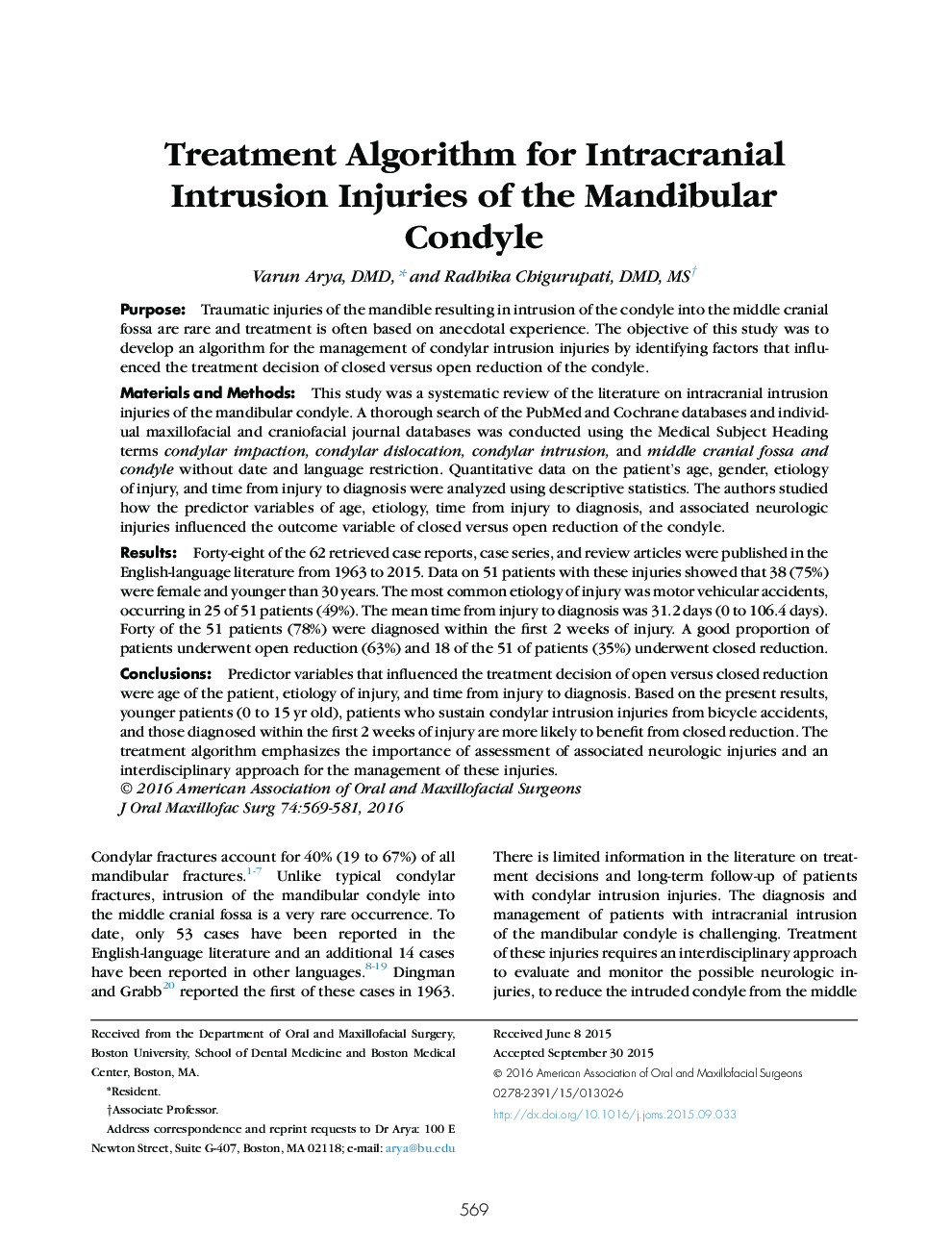| کد مقاله | کد نشریه | سال انتشار | مقاله انگلیسی | نسخه تمام متن |
|---|---|---|---|---|
| 3157652 | 1198194 | 2016 | 13 صفحه PDF | دانلود رایگان |
PurposeTraumatic injuries of the mandible resulting in intrusion of the condyle into the middle cranial fossa are rare and treatment is often based on anecdotal experience. The objective of this study was to develop an algorithm for the management of condylar intrusion injuries by identifying factors that influenced the treatment decision of closed versus open reduction of the condyle.Materials and MethodsThis study was a systematic review of the literature on intracranial intrusion injuries of the mandibular condyle. A thorough search of the PubMed and Cochrane databases and individual maxillofacial and craniofacial journal databases was conducted using the Medical Subject Heading terms condylar impaction, condylar dislocation, condylar intrusion, and middle cranial fossa and condyle without date and language restriction. Quantitative data on the patient's age, gender, etiology of injury, and time from injury to diagnosis were analyzed using descriptive statistics. The authors studied how the predictor variables of age, etiology, time from injury to diagnosis, and associated neurologic injuries influenced the outcome variable of closed versus open reduction of the condyle.ResultsForty-eight of the 62 retrieved case reports, case series, and review articles were published in the English-language literature from 1963 to 2015. Data on 51 patients with these injuries showed that 38 (75%) were female and younger than 30 years. The most common etiology of injury was motor vehicular accidents, occurring in 25 of 51 patients (49%). The mean time from injury to diagnosis was 31.2 days (0 to 106.4 days). Forty of the 51 patients (78%) were diagnosed within the first 2 weeks of injury. A good proportion of patients underwent open reduction (63%) and 18 of the 51 of patients (35%) underwent closed reduction.ConclusionsPredictor variables that influenced the treatment decision of open versus closed reduction were age of the patient, etiology of injury, and time from injury to diagnosis. Based on the present results, younger patients (0 to 15 yr old), patients who sustain condylar intrusion injuries from bicycle accidents, and those diagnosed within the first 2 weeks of injury are more likely to benefit from closed reduction. The treatment algorithm emphasizes the importance of assessment of associated neurologic injuries and an interdisciplinary approach for the management of these injuries.
Journal: Journal of Oral and Maxillofacial Surgery - Volume 74, Issue 3, March 2016, Pages 569–581
